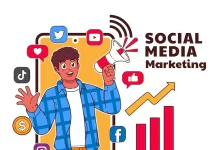Marketing your business doesn’t require a huge budget. Many entrepreneurs fail not because they lack resources, but because they lack a strategic approach. So, how do you market your business effectively on a tight budget?
The key: storytelling, social engagement, trust-building, and smart use of digital tools. These methods work for startups, home businesses, freelancers, and global entrepreneurs.
What Marketing Your Business Really Means
Marketing your business is the art and science of attracting customers, building awareness, and driving growth, without overspending. It encompasses:
-
Social media campaigns
-
Email marketing
-
Search Engine Optimization (SEO)
-
Referral programs and word-of-mouth
-
Strategic collaborations
Even small-budget marketing can have a global impact if done right.
How do you market your business?
Marketing your business means using strategies to attract customers, build awareness, and grow sales. This can be done through social media, email marketing, SEO, partnerships, and offline word-of-mouth — even on a small budget.
1. Tell Your Brand Story Authentically
Experience Matters: As an entrepreneur, sharing your journey establishes trust. People buy from brands they relate to emotionally.
Data-Driven Insight:
-
Brands that tell authentic stories retain 20% more customers (Content Marketing Institute, 2025).
-
Consumers trust transparent brands 1.5x more globally (Edelman Trust Barometer, 2024).
How to Craft Your Brand Story:
-
Start with Why: Explain why your business exists—solve a problem or serve a passion.
-
Share Challenges and Wins: Real stories resonate better than polished messaging.
-
Humanize Your Brand: Introduce your team via video or social content.
-
Highlight Values: Sustainability, inclusivity, or quality standards inspire loyalty.
Pro Tip: Create a 60-second founder video for LinkedIn, Instagram Reels, TikTok, or embed it on your website.
Global Example: A small Brazilian handmade jewelry brand increased engagement 45% in three months by sharing founder and customer stories.
2. Master Social Media With Purpose
Social media remains the most cost-effective channel for small businesses in 2025. But success comes from strategy, not frequency.
Step 1: Choose Platforms Wisely
-
LinkedIn: B2B, professional services
-
Instagram & TikTok: Lifestyle, visual products
-
Facebook: Community engagement and local services
-
X (Twitter): Thought leadership and trending topics
Step 2: Post Value-Driven Content
-
How-to tutorials and tips
-
Customer success stories
-
Behind-the-scenes content
Step 3: Engage, Don’t Just Broadcast
-
Reply to comments
-
Participate in niche communities
-
Host live Q&A sessions
Step 4: Repurpose Content Across Channels
-
Blog → Instagram carousel
-
Video → TikTok Shorts + YouTube Shorts
-
Podcast → LinkedIn article or blog transcript
Tools: Canva, CapCut, Buffer (free/low-cost globally).
Authority Insight: Brands engaging with followers see 3x higher retention and 2x more referrals (Sprout Social, 2024).
3. Build Trust Through Word-of-Mouth and Reviews
Word-of-mouth remains the most credible marketing channel, globally.
Data:
-
88% of consumers trust friends/family recommendations (Nielsen, 2024).
-
74% rely on positive reviews before purchasing.
Strategies:
-
Referral Programs: Offer discounts, free trials, or exclusive resources
-
Testimonials & Case Studies: Highlight measurable results
-
Customer Features: Showcase stories with quantitative metrics
Global Examples:
-
Mexican bakery increased foot traffic 30% using WhatsApp referral programs.
-
Indian freelance designer tripled engagement with LinkedIn client stories.
4. Offer Free Value Before Selling
Value-first marketing builds credibility and long-term customer relationships.
Types of Free Value:
-
Guides and how-to content
-
Templates and checklists
-
Bite-sized video tutorials
-
Free demos or consultations
Global Insights:
-
UK accounting firm converted 15% of free guide downloaders into paying clients.
-
South African skincare brand boosted organic reach 250% with tutorials.
Pro Tip: Use email sign-ups to deliver free content, creating a long-term lead generation funnel.
5. Email Marketing — Still the ROI King
Email marketing offers $42 ROI for every $1 spent (Litmus, 2024) and is perfect for low-budget campaigns.
How to Use Email Marketing Effectively:
-
Collect emails via forms, pop-ups, or free downloads
-
Segment your audience by interest or demographics
-
Send high-value, actionable content regularly
-
Automate sequences using Mailchimp, ConvertKit, Sendinblue
-
Track performance: open rates, CTR, and conversions
Global Case Study:
-
UK e-commerce startup increased sales 28% with segmented email campaigns.
-
Indian freelancer gained 50% new clients through monthly newsletters.
6. Optimize Your Website for SEO
SEO ensures your business is visible globally and locally, without paid ads.
Key Strategies:
-
Keyword research: AnswerThePublic, Ubersuggest, Google Keyword Planner
-
On-page SEO: meta tags, headings, ALT text
-
Local SEO: Google Business Profile, photos, reviews
-
Technical SEO: mobile-friendly, HTTPS, fast-loading pages
Global Insights:
-
Australian café boosted organic traffic 40% in 3 months using local SEO and blog content
-
South African digital marketer ranked globally with targeted FAQ pages
7. Collaborate With Other Businesses
Partnerships amplify reach without extra cost.
Collaboration Ideas:
-
Joint promotions
-
Co-hosted webinars/events
-
Social media shoutouts
-
Bundled offers
Global Examples:
- Canadian eco-brands increased Instagram engagement 70% with shared campaigns
- Filipino café & bakery boosted weekend sales 35% through co-hosted events
8. Repurpose Content Like a Pro
Repurposing maximizes reach, saves time, and improves ROI.
Examples:
-
Blog → social media posts
-
Video → Shorts/Reels
-
Podcasts → blog transcripts
-
Webinars → email series
-
Testimonials → visual content
Global Examples:
-
Brazilian agency increased engagement 4x by turning one blog post into multiple formats
-
German photographer repurposed tutorials across YouTube, TikTok, and PDFs
9. Join Free Online Communities
Engagement in communities builds credibility and organic referrals.
Tactics:
-
Join LinkedIn, Facebook, Discord, Slack groups
-
Participate in webinars and virtual events
-
Start micro-communities: WhatsApp, Telegram, or Facebook Groups
Global Examples:
-
UK design studio gained 10 clients via LinkedIn groups
-
Indian fitness trainer increased clients 35% via Telegram & WhatsApp groups
10. Track, Learn, and Adapt
Data-driven marketing improves results without increasing spend.
Metrics to Track:
-
Social engagement: likes, comments, shares, CTR
-
Email: open rates, conversions
-
Website: traffic, bounce rate, conversions
-
Lead sources: referrals, SEO, social media
Global Insight:
-
Canadian e-commerce store doubled sales by tracking Instagram Stories performance
-
Nigerian web developer gained consistent global leads via SEO-driven blog content
Final Thoughts
FAQs
1. How do I market my business without a budget?
Focus on storytelling, value-first content, social media engagement, referrals, and collaborations. Use free or low-cost tools to maximize reach.
2. Which social media platform is best for my business?
Choose platforms where your target audience is most active. For B2B, LinkedIn works best. For visual products, Instagram and TikTok are ideal.
3. How can I leverage email marketing effectively?
Segment your audience, offer value-driven content, and track engagement. Even a weekly or monthly newsletter can boost conversions.
4. What SEO strategies work globally?
Focus on keyword research, local and global SEO, blog content answering audience questions, and Google Business Profile optimization.
5. How do I measure marketing success?
Track social engagement, email metrics, website analytics, and referral sources. Use these insights to optimize and adapt your strategies.
Find a Home-Based Business to Start-Up >>> Hundreds of Business Listings.

















































